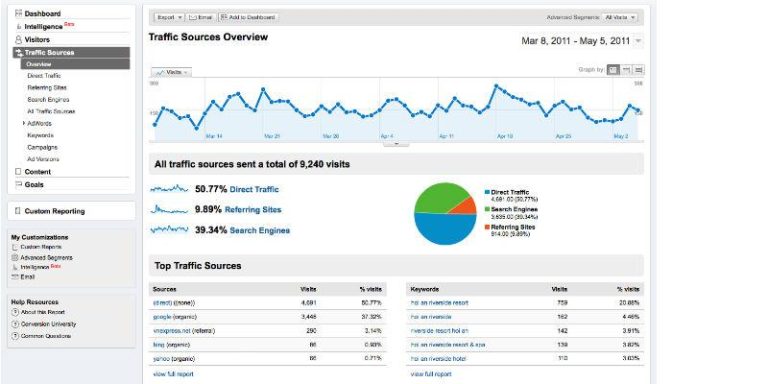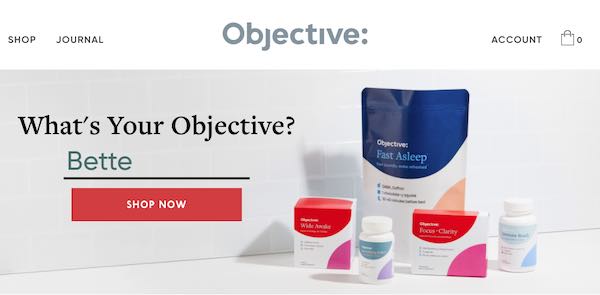10th Jan 2017 – 
Be careful though with the promises these case studies make – if you swear you will bring +70% in revenue because your competitor claims he did (here is why you shouldn’t blindly trust the split testing case studies), then your boss will be disappointed if you underperform and it may backfire. That’s a type of situation you want to avoid.
If you have access to Google Analytics, Mixpanel or other analytical tools, dig into data. Having actual numbers to support your ideas is useful. One can hardly argue with data.
A success in CRO may be your career springboard

Ask for permission to run a single A/B test on your own, ideally, one that doesn’t need much of designers or developers time. Changing the copy on a landing page is a great solution here. You can set it up on your own and still bump the conversion rate up.
Getting new tools approved and installed could take a while. In these circumstances quick usability testing will come in handy.
Do some background work before jumping in with a complicated and costly conversion optimization process. Start talking about CRO during a lunch with your boss. Send out some good articles or case studies to him and other stakeholders. Make people around you aware of conversion optimization.
Which CEO wouldn’t like to have additional k per year?
1. Identify the person you need to convince
Find the case studies and reports on the Internet. Look for the relevant ones, ideally from your industry, or even better – from your competitors. Showing a proof that CRO is working for industry experts, trustworthy marketers or the companies from the same industry is a strong point.
Analyze your current website. Basically, you need to spot 3-4 crucial bottlenecks/issues, ideally with the estimation of how much money the company loses every month because of them.
How to convince your boss to invest in conversion #optimization? @damianrams has the answer. Click To Tweet
2. Prepare a specific plan
Use a framework, like The LIFT Model by Widerfunnel or 10 Usability Heuristics by Jakob Nielsen, and conduct a heuristic analysis. It’s a fast and effective method designed for finding conversion and usability issues.
- A/B testing
- Heat maps and click maps
- On-site polls
- Surveys
- 5-second tests
- User testing
The second step is coming up with the “Why is it worth it” part. There are two main areas you should cover.
Remember to:
It can be the CEO, a Product Manager, Marketing Director, Performance Manager, or all of them at once. It depends on company structure, size, decision-making processes and so on. The longer you are in the organization, the easier it should be to spot the person you need to convince.
After gathering insights, prepare possible solutions. Include simple wireframes – pen and paper sketches will be fine. It will show that you have a plan for fixing the leaks on the website and making the company more money.
Simply ask 4-5 of your friends or people from a different department to complete a couple of tasks on your website. Observe them and jot down the issues they encounter.
That’s the way to get as many insights as possible. Don’t worry that you might sound pushy or annoying, asking these questions is your role! To feel more comfortable, inform your peer upfront that you are going to constantly nag during the test.
“If we improve the conversion rate of our checkout flow by 15%, we will generate additional ,300 monthly, and ,600 yearly.” Show the stakeholders how much money you made for the company. If they still don’t see the value of conversion optimization – change your job. Seriously, you will be better off in a place where the management understands and values employees keen on driving revenue growth.
I saw people who know how conversion optimization can improve company’s bottom line, but they were not sure about what’s in it for them. After making a timid (and not fruitful) suggestion about starting CRO process to the management, they would just give up. They didn’t see a point in fighting for it.
To convince your boss to invest in #cro : Talk numbers and you should be fine. @damianrams Click To Tweet
However, getting yourself into a meeting with the decision-maker and talking about CRO as a general concept will probably not bring you expected result. You need to be specific, so do your homework first.
Make what you are asking for clear for the stakeholders, so they know how what resources are necessary and how much they need to invest.
- What are you thinking now?
- What information are you looking for?
- Is there anything that is unclear on this page?
There are tools out there which enable you to run a small A/B test for free. You don’t need much of design or coding skills since they usually include a visual editor to move the content around.
Feedback from the real visitors works well too. It can be gathered via on-site surveys, user session replays or live chat transcripts, but your company might not be using an appropriate software at the moment.
Visitors feedback is great because it’s way harder to contradict than your opinions. If 3 out of 4 testers said that the slider is annoying, it would be more powerful than just you claiming the same thing.
3. Take action
If your organization is agiler, that can be anytime. There are no silver bullets here – do your research about how and when the decisions about budgets or big new projects are made in your company.
This is a vital moment, so make sure you tackle an obvious issue, and your solution is great. Run the split test and deliver conversion rate growth that you can link with the revenue.
Getting a buy-in for starting conversion optimization process in your organization may be a struggle. CRO is still quite a new concept – according to ConversionXL report, 50% of optimizers have been working in this field for less than 3 years. It would be cruel to blame your boss for not recognizing its value in the blink of an eye.

When you manage to arrange the deciding meeting, make sure everyone understands what you are talking about. Clarity and numbers are important.
For the warm-up, identify who is capable of making a decision of starting conversion optimization. Ideally, you are looking for a person who signs off the marketing budget and at the same has KPIs of driving more revenue or getting a higher ROI on marketing campaigns. It means that he will directly benefit from your success.
- Avoid terms no one understands/wants to hear (statistical significance, A/B tests, multivariate tests, bounce rate, etc.)
- Refer to stuff recognized as important (revenue, ROI, CPL, LTV)
- Be specific and use numbers
- Show how much money you will make for the company (you can use this calculator from Moz)
- Highlight the ROI from CRO (the revenue from a point above divided by the cost of resources and tools needed)
- Show the examples of issues with your website and solutions you would like to test
- Back everything up with case studies
- Highlight the ROI again
Even if you end the meeting hearing a big “NO” for conversion optimization (because there are no resources or other priority projects and investments to be made first), you still have a shot.
Well, they should. If conversion optimization is not a thing in your organization yet, you should consider it as a huge opportunity for yourself.
Imagine that you were allowed to run 3 split tests, and you managed to get 10% increase in revenue. If your company makes ,000,000 in revenue monthly, it means you boosted it by 0,00 per month and by a staggering ,200,000 annually.
It didn’t work? Try the last resort strategy

With tangible results in hand, it’s easier to negotiate a raise or get promoted.
When they explore the website, constantly ask them questions like:
The first step is figuring out what tools and resources you will need to do conversion optimization. Estimate how much time of programmers/designers you might need. Add the budget for the software needed for:
Remember to use maths. The more simple, the better. For example:
Remember to choose the right time for raising up the conversion optimization topic. For example, it might be 2-3 months prior to the date when the budgets for the next year are signed-off.
That being said, your role is to explain conversion optimization concept and how it benefits the company. If you follow my advice, you will make your stakeholders see value in CRO and give you budget for starting it.
Identify, prepare, action!
It’s rare to see someone turning his back on activities that bring additional money, though. Your winning test will probably be a starting point for building optimization culture in your organization.






